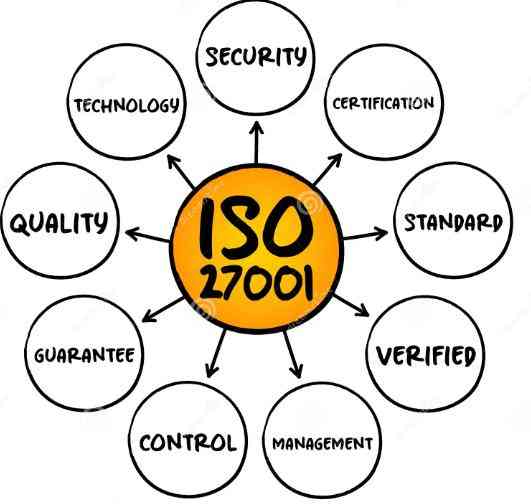|
UDC 536.51 : 542.2
IS0
I N TERN AT I ON A L O RG A N IZATl O N FOR S TA N DA RDlZ AT1 ON
IS0 RECOMMENDATION
R 651
SOLI D-STEM CALORIMETER TH E RMOMETE RS
1st EDITION
February 1968
COPYRIGHT RESERVED
The copyright of IS0 Recommendations and IS0 Standards
belongs to IS0 Member Bodies. Reproduction of these
documents, in any country, may be authorized therefore only
by the national standards organwtion of that country, being
a member of ISO.
For each individual country the only valid standard is the national standard of that country.
Printed in Switzerland
Also issued in French and Russian. Copies to be obtained through the national standards organizations.
---------------------- Page: 1 ----------------------
BRIEF HISTORY
The IS0 Recommendation R 65 1, Solid-stem calorimeter thermometers, was drawn up by
Technical Committee ISO/TC 48, Laboratory glassware and related upparatus, the Secretariat of
which is held by the British Standards Institution (BSI).
Work on this question by the Technical Committee began in 1957 and led. in 1961. to the
adoption of a Draft IS0 Recommendation.
In December 1963, this Draft IS0 Recommendation (No. 71.5) was circulated to all the IS0
Member Bodies for enquiry. It was approved, subject to a few modifications of an editorial nature, by
the following hlember Bodies :
Argentina France Pol dl1 d
Australia Greece Spain
Austria Hungary swi tzerldnd
Belgium India Turkey
Bruil Israel U 1Z.R
Bulgaria Italy United kingdom
Canada Japan II S.A.
Chile Korea, Rep. of Li S S I<
Colombia Netherlands Y ugoAn ia
Czechoslovakia New Zealand
No Member Body opposed the approval of the Draft.
The Draft IS0 Recommendation was then submitted by <.orrespondence to the IS0 Council,
which decided, in February 1968, to accept it as an IS0 RECOMMLNDATION.
-2-
---------------------- Page: 2 ----------------------
ISO/R 651 -1968 (E
IS0 Recommendation R 651 February 1968
SOLI D-STEM CALORIMETER THERMOMETERS
1. SCOPE
This IS0 Recommendation specifies requirements for a series of short-range solid-stem thermometers
for use in bomb calorimetry and for other purposes where an accurate measurement of a change of
temperature is required. The thermometers are not provided with auxiliary scales at O "C and are there-
fore not suited to the absolute measurement of temperature (which is not normally required in calor-
imetry), unless they are checked against a standard thermometer immediately before use.
2. TYPE OF THERMOMETER
The thermometers should be of the mercury-in-glass solid-stem type with enamel back.
3. TEMPERATURE SCALE
The temperature scale to which the thermometers refer is the International Practical Scale of Temp
erature, adopted by the Conférence Générale des Poids et Mesures in 1960 as the revised edition of
the International Temperature Scale of 1948.
4. IMMERSION
The thermometers should in general be adjusted for use at total immersion (i.e. the reading should be
correct when the thermometer is immersed at least to the end of the liquid column in the medium
whose temperature is required to be measured) in a vertical position, but adjustment for use at partial
immersion should be optional at the request of the user. On partial immersion thermometers, a line
should be etched at least halfway round the stem of the thermometer at the level to which it is
intended to be immersed.
5. GLASS
The glass should be selected so that the finished thermometer shows the following characteristics :
5.1 Strain in the glass should be reduced to a level sufficient to minimize the possibility of fracture
due to thermal or mechanical shock.
5.2
The correction of the thermometer reading at the lowest temperature of the nominal range
should not change by more than 0.02 degree Celsius immediately after the thermometer has
been heated for 15 minutes at a temperature 30 degrees Celsius higher than the lowest temp-
erature and allowed to cool naturally in air.
5.3 The accuracy of the reading should not be impaired by devitrifying or cloudingduring
manufacture.
5.4 The meniscus should be distorted as little as possible by defects or impurities in the glass.
-3-
---------------------- Page: 3 ----------------------
ISO/R 651-1968 (I
FIG. 1 - Solid-stem calorimeter thermometer
Dimensions in millimetres
-4-
---------------------- Page: 4 ----------------------
ISO/R 651-1968 (E
6. GAS FILLING
Above the thermometric liquid, thermometers may be either vacuous or gas-filled; in the latter case,
only a dry, inert gas should be used. The indication of a gas-filed thermometer, when the meniscus is
at the top of the scale, should not change by more than 0.01 degree Celsius, when the temperature of
the gas above the mercury is changed by 30 degrees Celsius.
NOTE. ~ If the bulb is sufficiently rigid for the thermometer to comply with clause 7.3, this requirement should be
satisfied, if the internal gas pressure does not exceed 1/2 atm (normal atmosphere), when the thermometer is
registering its highest temperature.
7. CONSTRUCTION
7.1 Shape
The thermometers should be straight and their external cross-section approximately circular.
7.2 Top finish
The top of the thermometer should have a rounded finish, unless otherwise specially required.
7.3 Capillary tube
of the bore should
The inside of the capillary tube should be smooth. The cross-sectional area
not show variations from the average greater than 5 and the bore should be wide enough to
ensure that, without tapping, jumping of the meniscus does not exceed one half of the graduat-
...














